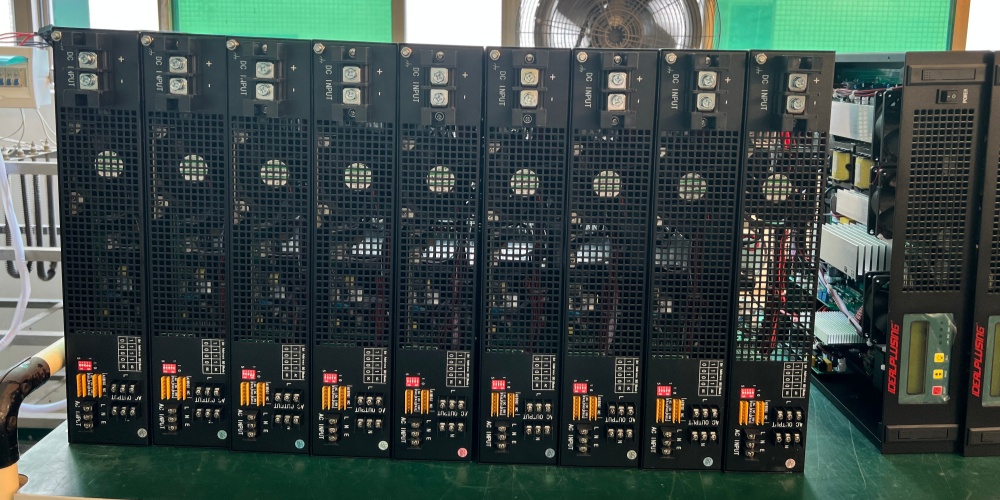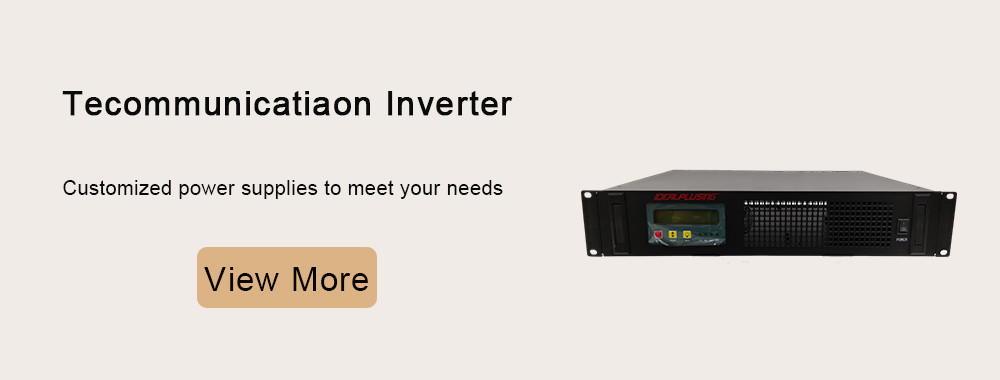Telecommunications inverters are electronic devices that convert direct current (DC) to alternating current (AC). They are widely used in communications, power generation, transportation, industry, and other fields. With the continuous advancement of technology and growing application demand, communications inverters are also constantly developing and improving. So, what are the characteristics of communications inverters? Let's take a look today.
Basic Principle of Communications Inverters
The basic principle of communications inverters is to convert DC to AC by utilizing the switching characteristics of semiconductor switching devices (such as transistors and field-effect transistors). Specifically, communications inverters control the on and off times of semiconductor switching devices to generate AC with different phases and amplitudes, thereby achieving DC-to-AC conversion.
Applications of Communications Inverters
Communications inverters have a wide range of applications in many fields. In the communications sector, communications inverters provide power and signal conversion, ensuring the proper operation of communications equipment. In the power sector, communications inverters are used for energy conversion in distributed power systems and smart grids. In the transportation sector, communications inverters are used for power supply and energy recovery in electric vehicles and rail transit. In the industrial sector, communications inverters are used for power management and energy control in automated equipment and production lines.
Functions of Various Components in Modern Communications Inverter Power Systems
1. Rectifier Circuit: The rectifier circuit uses rectifying switching devices, such as semiconductor diodes, thyristors (SCRs), and self-turn-off switching devices, to convert AC power into DC power. Furthermore, the rectifier circuit should also be able to suppress current harmonics and adjust the power factor.
2. Inverter Circuit: The inverter circuit converts DC power into AC power. By controlling the inverter circuit's operating frequency and output time ratio, the frequency and amplitude of the inverter's output voltage or current can be flexibly adjusted to meet user needs or equipment requirements.
3. Control Circuit: The control circuit generates and regulates a series of control pulses as required to control the on and off switching of the inverter switches, thereby cooperating with the inverter main circuit to complete the inverter function.
4. Auxiliary Circuit: The auxiliary circuit converts the inverter's input voltage into a DC voltage suitable for the control circuit's operation. For AC grid input, methods such as power frequency step-down, rectification, and linear voltage regulation can be used. Of course, a DC-DC converter can also be used.
5. Protection Circuit: The protection circuit's functions primarily include: input overvoltage and undervoltage protection; output overvoltage and undervoltage protection; overload protection; overcurrent and short-circuit protection; and overtemperature protection.
Summary
Communications inverters, as electronic devices that convert DC power to AC power, are widely used in various fields. With technological advancements and increasing application needs, communications inverters will continue to develop and improve. In the future, communications inverters will become even more powerful, bringing greater convenience and value to people's lives and work.
IDEALPLUISNG Power Expert:
We focus on the research and development, sales and services in the fields of DC-DC power modules, AC-DC rectifier modules, DC-AC inverters, AC power supplies, DC power supplies, LED power supplies, chargers, rectifier systems, etc., providing personalized, efficient, reliable and cost-effective power solutions for all walks of life.
Thank you for considering our services.







